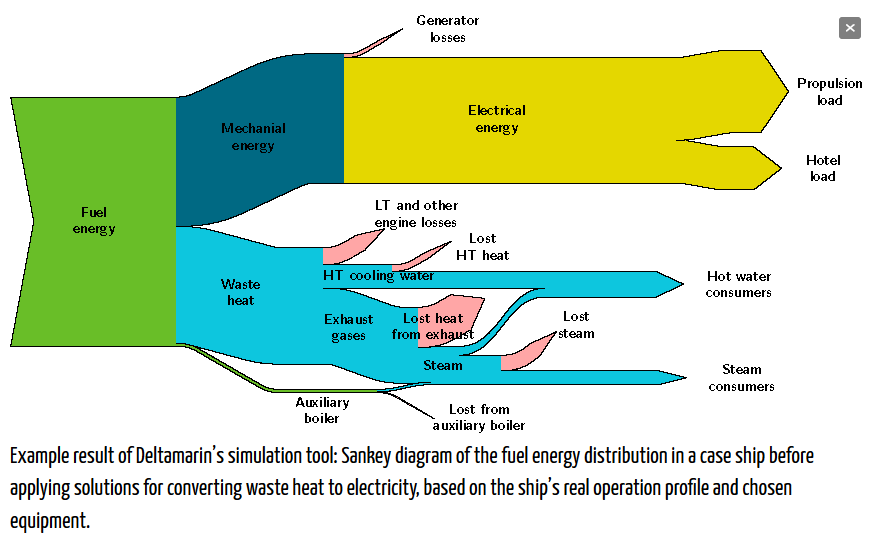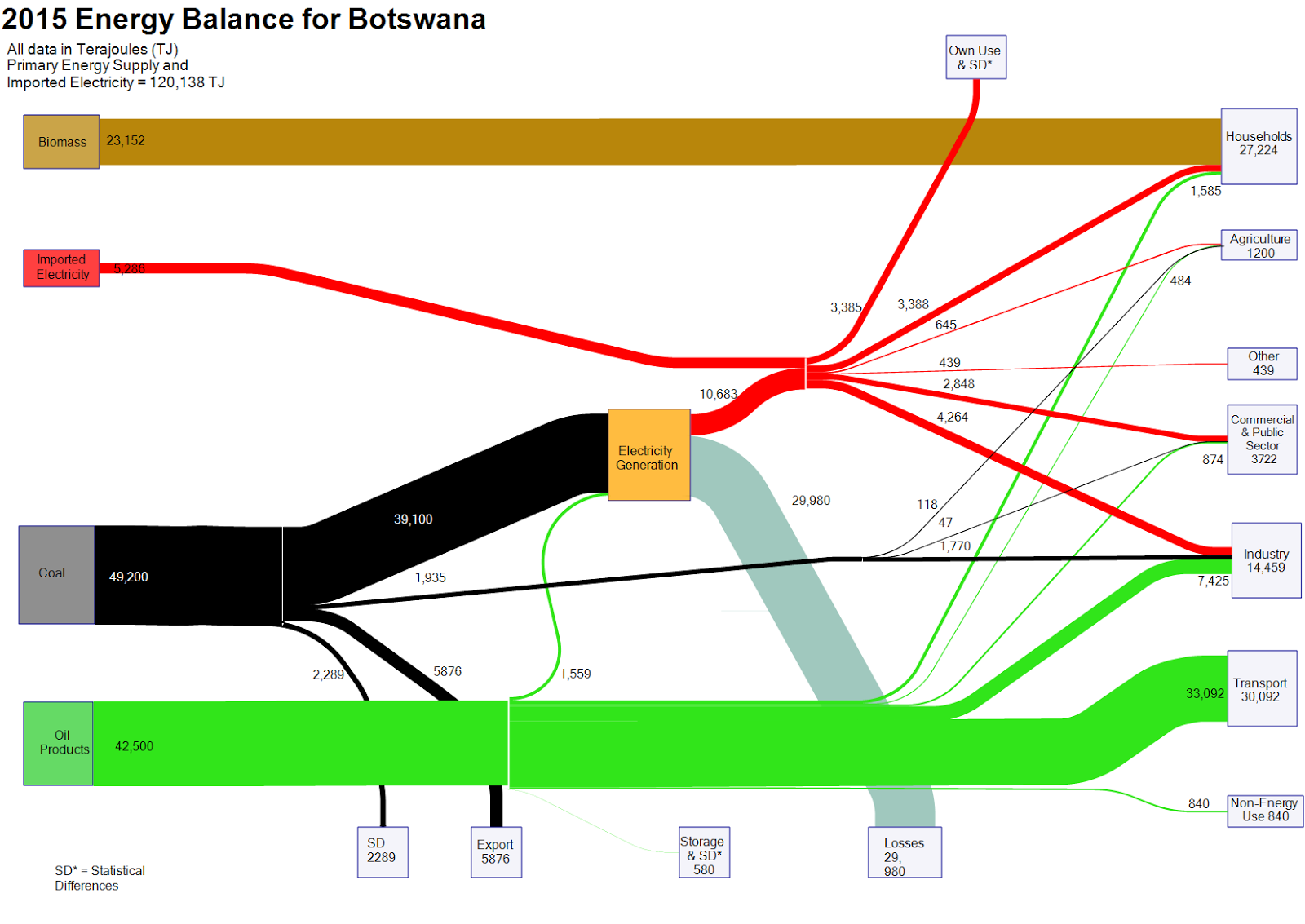Deltamarin Ltd, a Finnish maritime engineering and consulting firm has developed a simulation and analysis tool, that allows to study the energy efficiency of ships. The model takes into account not only the vessel speed and fuel consumption, but also the secondary on-board electricity consumers and waste heat recovery. Results are shown in a Sankey diagram like the one below.
The Sankey diagram in this pic doesn’t show any numbers or unit of flow, so we can only conclude from the arrow magnitudes that about 50% of the energy is lost as heat at the engine (some of which is recovered for heating of water).
I am not sure about the propulsion being electric though.
The design of the diagram is rather crude and diagonal lines are visibly pixelated. But nevertheless it seems like a good way to get the energy efficiency model result data across other than in a table.
Watch this video where a Deltamarin engineer explains the simulation model and also the Sankey diagram.

